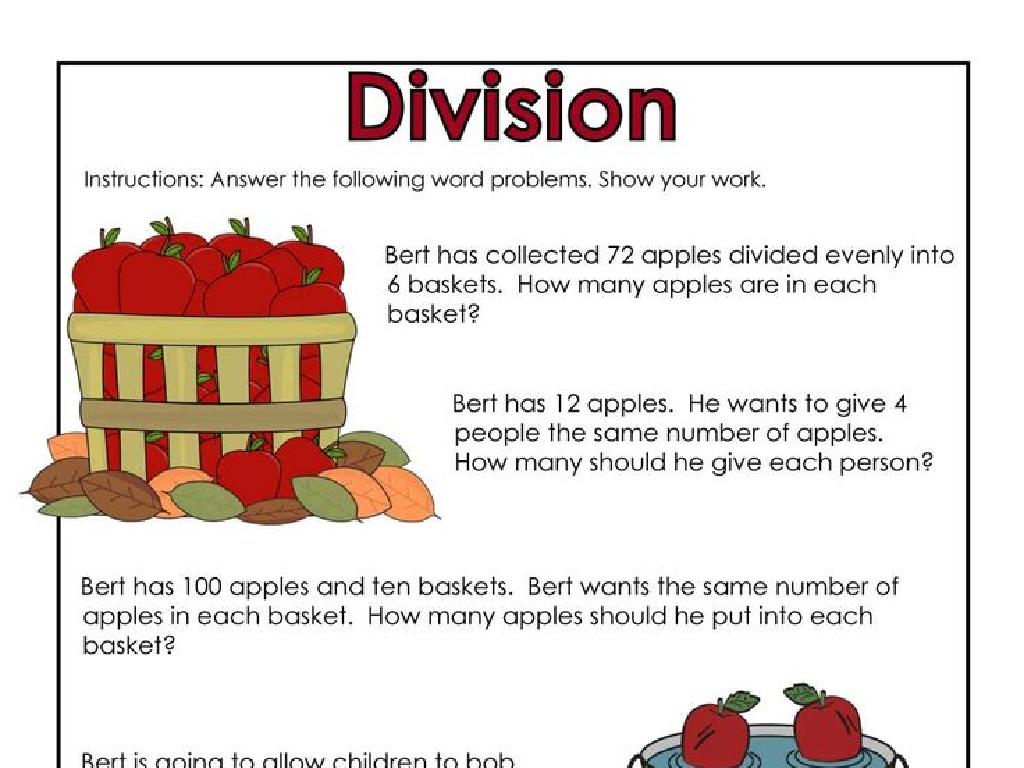Use The Correct Verb - With Compound Subjects
Subject: Language arts
Grade: Seventh grade
Topic: Subject-Verb Agreement
Please LOG IN to download the presentation. Access is available to registered users only.
View More Content
Mastering Subject-Verb Agreement: Compound Subjects
– Subjects and verbs must agree
– When a sentence has a subject and a verb, they must agree in number
– Importance of subject-verb agreement
– Proper agreement makes sentences clear and understandable
– Defining compound subjects
– A compound subject is made up of two or more subjects joined by a conjunction
– Correct verb usage with compound subjects
– Use a singular verb if the parts of the subject are singular and joined by ‘or’ or ‘nor’
|
This slide introduces the concept of subject-verb agreement and its importance in writing, with a special focus on compound subjects. Start by explaining that for a sentence to be grammatically correct, the subject and verb must agree in number (singular or plural). Emphasize that this agreement is crucial for clarity in writing. Define compound subjects as two or more subjects that are connected by words like ‘and’, ‘or’, or ‘nor’. Teach students that when ‘and’ joins the subjects, a plural verb is typically used, but with ‘or’ or ‘nor’, the verb should agree with the part of the subject closer to the verb. Provide examples and exercises to practice this rule.
Compound Subjects in Sentences
– Define a compound subject
– A compound subject has two or more subjects joined by a conjunction.
– Examples of compound subjects
– ‘Cats and dogs’ or ‘My friend and I’ are compound subjects.
– Verb agreement with compound subjects
– Subjects joined by ‘and’ usually take a plural verb, e.g., ‘My friend and I are studying.’
– Practice identifying correct verbs
|
This slide introduces the concept of compound subjects and how they affect verb agreement in sentences. A compound subject consists of two or more individual subjects that are connected by a conjunction such as ‘and’ or ‘or.’ It’s crucial for students to understand that the verb must agree with the compound subject in number. Typically, compound subjects joined by ‘and’ require a plural verb, while those joined by ‘or’ may take a singular or plural verb depending on the closest subject to the verb. Provide students with additional examples and exercises to practice identifying the correct verb form to use with compound subjects.
Singular vs. Plural Verbs: Mastering Subject-Verb Agreement
– Review singular & plural verbs
– Singular verbs end with ‘s’, while plural verbs do not.
– Matching verbs with subject number
– Singular subjects take singular verbs, while plural subjects take plural verbs.
– Practice with identifying verb forms
– Find verbs in sentences and determine if they’re singular or plural.
– Class activity on verb agreement
– We’ll work together to correct sentences with subject-verb mismatches.
|
Begin with a quick review of singular and plural verbs, emphasizing the general rule that singular verbs often end with an ‘s’ (e.g., he runs), while plural verbs do not (e.g., they run). Explain how to match the verb to the subject’s number (singular or plural) to ensure proper subject-verb agreement. Use examples to illustrate this point. For practice, provide sentences where students identify verbs and determine if they are singular or plural based on the subject. Conclude with a class activity where students work in pairs or small groups to find and correct sentences with subject-verb agreement errors. This interactive approach will help reinforce the lesson and allow for immediate feedback and clarification.
Verb Agreement with Compound Subjects
– ‘Or’ or ‘nor’ with singular subjects
– Use a singular verb when two singular subjects are joined by ‘or’ or ‘nor’.
– Singular and plural subject rules
– When subjects differ in number, the verb agrees with the subject closest to it.
– ‘And’ connects two singular subjects
– When two singular subjects are joined by ‘and’, they typically require a plural verb.
– Plural verbs with compound subjects
|
Understanding subject-verb agreement with compound subjects is crucial for constructing grammatically correct sentences. Rule 1 emphasizes that when ‘or’ or ‘nor’ connects two singular subjects, the verb should also be singular, e.g., ‘Neither the cat nor the dog is outside.’ Rule 2 deals with mixed subjects; the verb should agree with the closest subject, e.g., ‘Either the students or the teacher is responsible.’ Rule 3 states that two singular subjects connected by ‘and’ usually need a plural verb, e.g., ‘The cat and the dog are friends.’ It’s important to note exceptions and nuances in these rules, which can be explored through examples and practice exercises in class.
Subject-Verb Agreement: Special Cases
– Same person or thing exception
– When subjects like ‘The singer and guitarist’ refer to one person, use a singular verb.
– ‘With’ or ‘as well as’ usage
– ‘The teacher, with the students, is planning a trip’ – ‘with’ doesn’t change the verb to plural.
– Meaning over form
– Understand the subject’s true meaning to choose the right verb form.
– Practice with examples
– Let’s look at sentences and decide the correct verb form together.
|
This slide addresses exceptions in subject-verb agreement with compound subjects. Emphasize that when two subjects are connected and refer to the same entity, a singular verb is used. When subjects are joined by phrases like ‘with’ or ‘as well as,’ the verb should agree with the first subject. It’s crucial to look beyond the structure and consider the meaning of the subjects to determine the correct verb form. Provide practice sentences for students to apply these rules, reinforcing their understanding through examples.
Let’s Practice Together: Compound Subjects
– Identify correct verbs for compound subjects
– When subjects are joined by ‘and’, use a plural verb, e.g., ‘The cat and dog are friends.’
– Correct mistakes in example sentences
– ‘She and her friends is going’ should be ‘She and her friends are going.’
– Create sentences with compound subjects
– Combine two subjects in one sentence, ensuring the verb agrees, e.g., ‘My brother and I walk to school.’
|
This slide is an interactive class activity to reinforce the concept of subject-verb agreement with compound subjects. Start by explaining that when two subjects are connected by ‘and’, the verb should be plural. Show examples on the board and ask students to identify the correct verb form. Then, present sentences with errors for students to correct as a class. Finally, have students create their own sentences using compound subjects, which they can share with a partner or the class. This activity will help students apply the rules of subject-verb agreement in a practical and engaging way.
Class Activity: Verb Agreement Relay
– Split into teams for the relay
– Line up at the board
– Correct sentences for verb agreement
– Each team corrects one sentence at a time
– First team to finish wins!
– Ensure all sentences are correctly matched with verbs
|
This activity is designed to reinforce the concept of subject-verb agreement with compound subjects in a fun and interactive way. Divide the class into small teams and have them line up at the board. Provide each team with a sentence that has a compound subject and an incorrect verb. One at a time, team members will go to the board to correct the verb so that it agrees with the subject. The first team to correctly complete all their sentences wins. Possible sentences for the activity could include: ‘The cat and the dog (is/are) playing together’, ‘Peanut butter and jelly (make/makes) a great sandwich’, ‘My friend and mentor (teach/teaches) me new things’, ‘The sun and the moon (shine/shines) brightly’. This will help students practice identifying subjects and selecting the correct verb form, promoting a better understanding of subject-verb agreement.
Conclusion & Homework: Mastering Compound Subjects
– Recap: Compound Subjects & Verbs
We reviewed how verbs must agree with compound subjects in number.
– Clear Writing Needs Agreement
Subject-verb agreement is crucial for clarity and precision in writing.
– Homework: Subject-Verb Worksheet
Complete the provided worksheet focusing on compound subjects.
– Practice Makes Perfect
|
As we wrap up today’s lesson, it’s important to reinforce the concept of subject-verb agreement with compound subjects. Understanding this agreement is essential for students to write clearly and effectively. For homework, students are assigned a worksheet that will provide practice in identifying and correcting subject-verb agreement errors, specifically with compound subjects. This practice will help solidify their understanding and application of the rules. Encourage students to review their notes from today’s lesson while completing the worksheet and to prepare any questions they may have for the next class.






